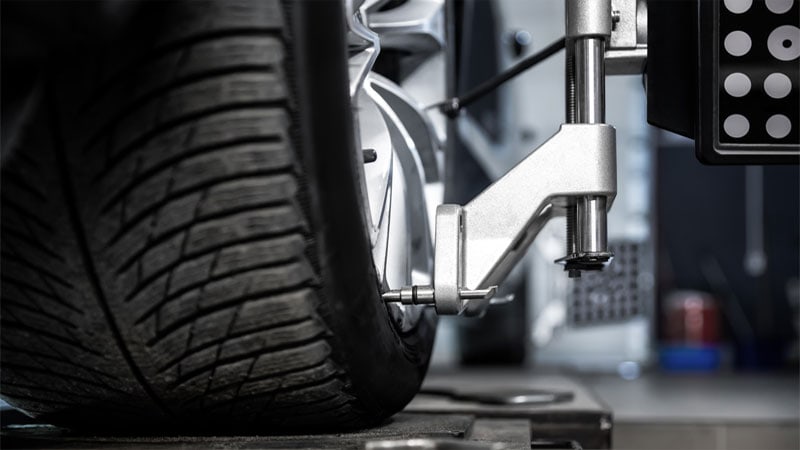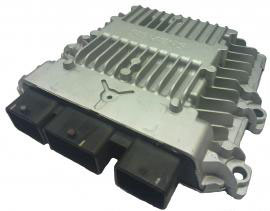When it comes to vehicle performance and handling, one crucial factor often overlooked is the camber angle. Camber refers to the tilt of the wheels relative to the vertical axis when viewed from the front or rear of the car. It can be categorized into positive and negative camber angles, each of which has a significant impact on your car’s stability, tire wear, and overall driving experience. In this article, we’ll delve into the details of how positive and negative camber angles affect your car’s performance and handling.
Understanding Camber Angle
Camber angle is the measure of how much a car’s wheel leans either towards or away from the vehicle’s centerline. When the top of the wheel tilts outward, it’s called a positive camber, while when it tilts inward, it’s referred to as a negative camber.
Positive Camber Angle
- Effects on Handling: Positive camber angles are rarely seen on modern passenger vehicles because they can have adverse effects on handling. When there’s too much positive camber, the vehicle tends to be less stable during turns, and it may exhibit excessive body roll.
- Tire Wear: Excessive positive camber can lead to uneven tire wear. The outer edges of the tires bear the brunt of the load, causing premature wear. This not only reduces tire lifespan but also compromises safety.
- Utility Vehicles and Off-Roading: Some utility vehicles, like off-road trucks and farm equipment, may have positive camber angles intentionally set to enhance stability during heavy-load carrying or off-road applications.

Negative Camber Angle
- Effects on Handling: Negative camber angles are more common in modern vehicles, especially performance and sports cars. They offer improved cornering stability and grip, making the vehicle feel more responsive and agile during turns.
- Tire Wear: While a negative camber can improve cornering, it may lead to slightly increased tire wear on the inner edges. However, this wear is often considered acceptable and can be mitigated with regular tire rotation and alignment checks.
- Performance Enhancements: Many motorsports enthusiasts and car tuners opt for negative camber angles to improve high-speed stability and cornering performance. It enhances tire-to-road contact during aggressive driving.
Read more: Tips on How to Maintain Your Power Steering System
Balancing Camber for Optimal Performance
- Alignment: Maintaining proper wheel alignment is crucial for achieving the desired camber angles. Regular alignment checks and adjustments by a professional are recommended.
- Suspension Tuning: Adjusting the suspension components, such as camber plates or adjustable control arms, allows you to fine-tune camber angles to suit your driving style or specific performance goals.
- Driving Conditions: Consider your typical driving conditions. If you primarily drive on the street, a slight negative camber may enhance handling without causing excessive tire wear. For track or off-road use, you might need more aggressive camber settings.
- Regular Maintenance: Regardless of your camber angle preference, it’s essential to maintain your vehicle properly. Regularly inspect and rotate your tires, and replace them when necessary to ensure even wear.
FAQs
1. What is the camber angle, and why is it important for my vehicle?
Camber angle refers to the tilt of your vehicle’s wheels concerning the vertical axis. It’s important because it significantly affects your vehicle’s handling, stability, and tire wear. Proper camber adjustment can enhance performance and safety.
2. What is positive camber, and when is it used?
Positive camber occurs when the top of the wheel tilts outward. It’s rarely used in modern passenger vehicles due to its negative impact on handling. Some utility vehicles may have positive camber settings for stability during heavy loads or off-road use.
3. What is negative camber, and why is it preferred in some cases?
A negative camber happens when the top of the wheel tilts inward. It’s commonly used in performance and sports cars to improve cornering stability and grip, enhancing overall handling. It’s also preferred in motorsports for its performance benefits.
Read more: How To Take Care Of Your Car AC: Prep Your Car For Summers
4. Can camber angles be adjusted on my vehicle?
Yes, camber angles can often be adjusted by a professional mechanic or alignment specialist. Adjustable suspension components, such as camber plates or control arms, allow for precise camber angle adjustments.
5. How does camber angle affect tire wear?
Excessive positive camber can lead to uneven tire wear on the outer edges of the tires. A negative camber may cause slightly increased wear on the inner edges. Proper alignment and regular tire maintenance can help mitigate these issues.
6. Is there an ideal camber angle for all vehicles?
There isn’t a one-size-fits-all ideal camber angle. The optimal camber angle depends on factors such as your vehicle’s type, intended use, driving conditions, and personal preferences. Consult with a professional to determine the right camber settings for your specific situation.
7. Can I adjust camber angles on my own, or should I seek professional help?
While some DIY enthusiasts may attempt to adjust camber angles, it’s generally recommended to seek professional assistance. Proper camber adjustment requires specialized tools and expertise to ensure safe and effective alignment.
8. Are there any safety concerns associated with camber adjustments?
Improper camber adjustments can negatively impact vehicle stability and handling, potentially leading to safety issues. It’s essential to have your camber angles adjusted by a qualified mechanic to maintain safe driving conditions.
9. How often should I check my vehicle’s camber angles?
Regular wheel alignments, which include camber angle checks, are typically recommended at least once a year or whenever you notice uneven tire wear, steering issues, or handling problems.
10. Can extreme camber angles be dangerous for driving?
Yes, extreme camber angles, whether positive or negative, can be dangerous.
Conclusion
Camber angles, whether positive or negative, play a pivotal role in your car’s handling, stability, and tire wear. Striking the right balance is crucial for optimizing performance and ensuring safety on the road. Consult with a qualified mechanic or alignment specialist to determine the ideal camber settings for your specific vehicle and driving needs. By doing so, you can enjoy a smoother, more responsive ride and extend the life of your tires.


